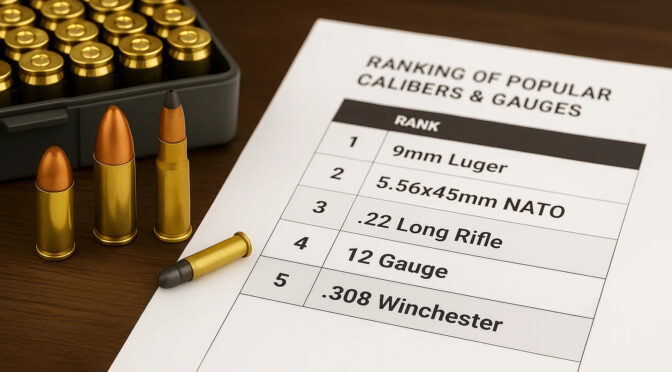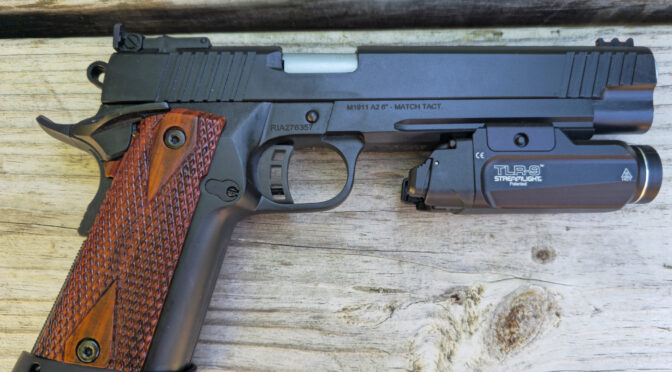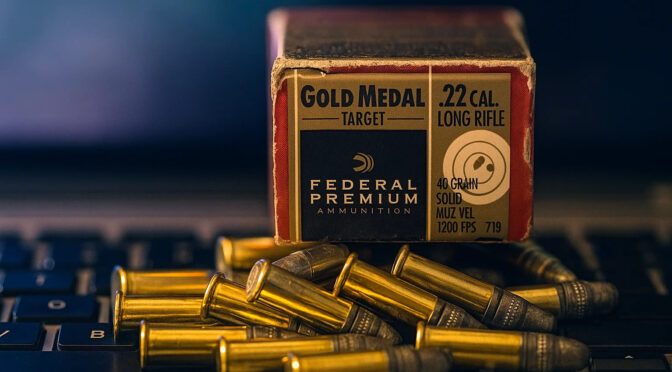This report provides a detailed analysis and ranking of the world’s top 10 special operations forces (SOF), based on a multi-criteria methodology assessing training, mission scope, operational history, global influence, and technological sophistication. The units evaluated represent the pinnacle of military special operations, often referred to as “Tier 1” or Special Mission Units (SMUs), tasked with the most critical and sensitive national security missions.
The final ranking is as follows:
- 1st Special Forces Operational Detachment-Delta (Delta Force) – United States
- 22 Special Air Service (SAS) – United Kingdom
- Naval Special Warfare Development Group (DEVGRU) – United States
- Sayeret Matkal – Israel
- Special Boat Service (SBS) – United Kingdom
- Special Air Service Regiment (SASR) – Australia
- Joint Task Force 2 (JTF2) – Canada
- Kommando Spezialkräfte (KSK) – Germany
- FSB Directorate “A” (Alpha Group) – Russia
- Groupe d’Intervention de la Gendarmerie Nationale (GIGN) – France
The analysis places the U.S. Army’s Delta Force at the top due to its exceptionally broad and modern mission set, which includes not only direct action and counter-terrorism but also dedicated cyber warfare capabilities. Furthermore, its unique mandate to recruit from the entirety of the U.S. military, including other special operations units, provides it with an unparalleled talent pool.
Key trends identified across these elite formations include a significant convergence in the small arms and tactics of Western SOF, particularly among the “Five Eyes” nations. The widespread adoption of the Heckler & Koch HK416 platform and its derivatives signifies a collective move towards highly reliable, piston-driven carbines. Conversely, the armament choices of near-peer competitors like Russia and China reflect distinct national strategies, with Russia blending modified domestic platforms with select Western technologies and China pursuing a path of near-total self-reliance. This divergence in equipment philosophy is indicative of broader geopolitical alignments and defense-industrial strategies in an era of renewed great power competition.
The Modern Special Operations Landscape
The Evolving Strategic Role of SOF
In the 21st century, the strategic role of special operations forces has undergone a profound transformation. Once considered specialized assets in support of larger conventional campaigns, SOF have evolved into primary instruments of state power, particularly suited for the complexities of asymmetric warfare, counter-terrorism, and “grey zone” conflicts that fall below the threshold of traditional warfare. Their ability to conduct high-impact, low-visibility operations provides political leaders with a range of scalable and often deniable options.
The increasing strategic importance of these units is evidenced by the career trajectories of their commanders. In the United States, for example, former special operations officers have risen to the highest echelons of military leadership, including positions such as the Army’s Chief of Staff and the Chairman of the Joint Chiefs of Staff, underscoring the centrality of special operations in modern military thought and national security strategy.1
Defining the Tiers of Special Operations
To accurately compare and contrast the world’s elite units, it is essential to employ a functional framework that distinguishes their roles and capabilities. While not an official military designation, the “Tier” system is a widely used and analytically valuable construct for categorizing SOF.2
- Tier 1: This designation is reserved for a nation’s most elite Special Mission Units (SMUs). These units typically operate under a national-level command, such as the U.S. Joint Special Operations Command (JSOC), and are tasked with the most sensitive, critical, and clandestine missions, including strategic counter-terrorism and hostage rescue.2 The units profiled in this report are universally considered to be Tier 1 forces.
- Tier 2: These are highly capable special operations forces that often have a broader, more regionally focused mission set. Examples include the U.S. Army Green Berets and standard Navy SEAL teams. Their core tasks often revolve around Unconventional Warfare (UW) and Foreign Internal Defense (FID), which involve training and advising foreign military and paramilitary forces.2
- Tier 3: This term is sometimes used to describe elite conventional forces or specialized infantry units that possess capabilities beyond standard infantry, such as airborne or ranger units.2
Although the “Tier” terminology originated as an informal system, the underlying concept of a hierarchical structure with a national-level SMU at its apex is a globally recognized military reality. Units like the SAS, Delta Force, and Sayeret Matkal occupy functionally equivalent positions within their respective national security architectures, serving as the ultimate tool for direct action and crisis response.3 This report utilizes the Tier framework not as a rigid label but as a functional model to clarify the distinct roles these apex units are designed to fulfill.
Profiles of the Global Top 10 Special Operations Forces
The following profiles detail the lineage, mission spectrum, and small arms of the world’s ten most capable special operations forces, as determined by the methodology outlined in Appendix A.
1. United States: 1st Special Forces Operational Detachment-Delta (Delta Force)
- Lineage and Mandate: Officially known as the Combat Applications Group (CAG) and various other cover names, Delta Force is the U.S. Army’s premier Tier 1 SMU, operating under the direct command of JSOC. Formed in the late 1970s and modeled after the British SAS, its mandate is to execute the nation’s most complex and dangerous missions related to counter-terrorism and special operations.3
- Mission Spectrum: Delta Force specializes in the full spectrum of high-risk operations, including counter-terrorism (CT), direct action (DA), hostage rescue (HR), and the capture or elimination of high-value targets (HVTs).3 The unit’s structure is exceptionally advanced, featuring not only assault and reconnaissance squadrons but also a dedicated aviation squadron and a Computer Network Operations Squadron (CNOS), known as the “Digital Devils,” tasked with cyber warfare and intelligence gathering. This integration of kinetic and non-kinetic capabilities places Delta at the forefront of modern special operations.4
- Small Arms: Delta operators have access to a highly customized and advanced arsenal, maintained by dedicated unit gunsmiths who tailor weapons to individual and mission-specific needs.6
- Primary: The Heckler & Koch HK416 assault rifle is the unit’s standard primary weapon. It was adopted over the M4A1 due to the superior reliability of its short-stroke gas piston system, especially when used with suppressors.4
- Secondary: Operators have largely transitioned from customized Colt M1911A1 pistols to the Glock 19, which is valued for its exceptional reliability, lighter weight, and ease of use.4
- Support/Specialized: The arsenal includes the HK417 battle rifle, a wide array of precision sniper systems, and various shotguns and breaching tools tailored for specific operational requirements.6
2. United Kingdom: 22 Special Air Service (SAS)
- Lineage and Mandate: The 22 SAS is the archetypal modern special forces unit, whose lineage traces back to World War II.3 As a core component of United Kingdom Special Forces (UKSF), its motto, “Who Dares Wins,” has been adopted by numerous other elite units worldwide, a testament to its profound influence on the evolution of special operations.3
- Mission Spectrum: The SAS has a broad and demanding remit that includes counter-terrorism, hostage rescue, direct action, and special reconnaissance.8 The unit is renowned for its operational proficiency in diverse and challenging environments, including jungle, desert, and urban settings.12 Its global reputation as a premier counter-terrorism force was cemented by the successful storming of the Iranian Embassy in London in 1980.3
- Small Arms: The SAS prioritizes ergonomic and reliable weapon systems, often preferring platforms common among its key allies.
- Primary: The standard rifle is the Colt Canada C8 SFW (Special Forces Weapon), designated as the L119A1/A2 in British service. This choice over the standard-issue L85 rifle highlights a preference for the more modular and battle-proven AR-15 platform.14
- Secondary: The Glock 17 (now the standard sidearm for the entire British military) and the SIG Sauer P226 are the primary pistols, having replaced the long-serving Browning Hi-Power.11
- Support/Specialized: The Heckler & Koch MP5 submachine gun remains a key weapon for close-quarters counter-terrorism roles. The L115A3 long-range rifle is a primary sniper system, supplemented by various machine guns.15
3. United States: Naval Special Warfare Development Group (DEVGRU)
- Lineage and Mandate: Commonly known as SEAL Team Six, the Naval Special Warfare Development Group (DEVGRU) is the U.S. Navy’s Tier 1 SMU and the maritime counterpart to Delta Force, operating under JSOC.5
- Mission Spectrum: While founded with a maritime focus, DEVGRU’s operational scope is global and all-encompassing. Its core missions include counter-terrorism, direct action, special reconnaissance, and hostage rescue in any environment—sea, air, or land.16 The unit’s most famous and strategically significant operation was Operation Neptune Spear, the 2011 raid in Abbottabad, Pakistan, that resulted in the death of Osama bin Laden.12
- Small Arms: DEVGRU’s arsenal is tailored for versatility and lethality across a wide range of operational scenarios.
- Primary: The Heckler & Koch HK416, often configured with a 10.4-inch barrel for close-quarters battle (CQB), is a primary weapon, alongside variants of the M4A1 carbine.17
- Submachine Gun: The Heckler & Koch MP7 is a key specialized weapon, reportedly carried by operators during the Bin Laden raid. It is valued for its compact size, high rate of fire, and the armor-piercing capability of its 4.6x30mm ammunition.17
- Secondary: The SIG Sauer P226R has long been the unit’s standard sidearm, though the Heckler & Koch HK45CT in.45 ACP is also used.17
- Support/Sniper: The unit employs the MK46 (5.56mm) and MK48 (7.62mm) machine guns for suppressive fire. Its sniper inventory is extensive, including the McMillan TAC-338 and the Barrett M82 (.50 BMG) for anti-materiel and extreme long-range engagements.17
4. Israel: Sayeret Matkal
- Lineage and Mandate: Sayeret Matkal is the Israel Defense Forces’ (IDF) elite special reconnaissance and direct action unit. Reporting directly to the IDF General Staff, it was modeled after the British SAS and is tasked with gathering strategic intelligence deep within hostile territory.3
- Mission Spectrum: The unit’s primary functions are strategic reconnaissance, counter-terrorism, and hostage rescue.9 Its most legendary mission is the 1976 hostage rescue at Entebbe, Uganda (Operation Thunderbolt), which stands as a benchmark for long-range, high-risk special operations.3 Sayeret Matkal is also tasked with pre-emptive strikes against strategic threats and disrupting enemy weapons smuggling operations.19
- Small Arms: Sayeret Matkal operators utilize a mix of Israeli-made and foreign weapon systems, prioritizing performance and adaptability.
- Primary: Operators are commonly equipped with M4A1 carbines and variants of the IWI Tavor family, such as the X95.20 The recent adoption of the SIG Sauer MCX by Israeli SMUs indicates a modernization trend toward modular, state-of-the-art platforms.22
- Secondary: Glock 17/19 and SIG Sauer P226/P228 pistols are standard-issue sidearms.20
- Submachine Gun: The iconic IMI Uzi has been a historical mainstay of the unit, though it has been largely supplemented by more modern carbines and PDWs for primary roles.9
5. United Kingdom: Special Boat Service (SBS)
- Lineage and Mandate: The SBS is the UK’s Tier 1 maritime special forces unit and the Royal Navy’s counterpart to the 22 SAS. As a sister unit to the SAS, it operates under the command of UKSF.10
- Mission Spectrum: The SBS specializes in the full spectrum of maritime special operations, including maritime counter-terrorism (MCT), amphibious warfare, beach reconnaissance prior to landings, anti-shipping tasks, and sabotage of coastal and naval infrastructure.24 While its core expertise is waterborne, the SBS is equally proficient on land, having conducted extensive operations in landlocked theaters such as Afghanistan and Iraq.24
- Small Arms: The SBS shares much of its arsenal with the SAS, ensuring interoperability within UKSF.
- Primary: The main assault rifle is the Colt Canada C8 SFW (L119A1/A2) carbine, valued for its performance and modularity.14
- Secondary: The SIG Sauer P226 is the standard-issue sidearm for the unit.14
- Specialized: A unique capability of the SBS is its use of the Heckler & Koch P11 underwater pistol, a non-suppressed firearm that fires electrically ignited darts for specialized underwater combat missions.14
6. Australia: Special Air Service Regiment (SASR)
- Lineage and Mandate: The SASR is Australia’s premier Tier 1 SMU, established in 1957 and modeled directly on the British SAS.3 It is the lead combat unit within Australia’s Special Operations Command (SOCOMD).
- Mission Spectrum: The SASR conducts the full range of special operations missions. Its core tasks include covert reconnaissance, direct action, and a primary national responsibility for both international and domestic counter-terrorism, forming the core of Tactical Assault Group (West).26
- Small Arms: The SASR uses a combination of American and European weapon systems, selected for performance and interoperability with key allies.
- Primary: The Colt M4A1 carbine (designated M4A5 in Australian service) and the Heckler & Koch HK416 are the standard-issue rifles for Australian special forces.28
- Secondary: The Browning Hi-Power (designated SLP 9mm Mk3) has been the long-serving sidearm, though it is in the process of being replaced by more modern pistols.28
- Support/Sniper: The unit’s arsenal includes the FN Minimi (Para variant) light support weapon, the HK417 marksman rifle, and a variety of sniper systems such as the Blaser Tactical 2, SR-98, and the Mk 14 Enhanced Battle Rifle.29
7. Canada: Joint Task Force 2 (JTF2)
- Lineage and Mandate: JTF2 is Canada’s highly secretive Tier 1 SMU and the centerpiece of the Canadian Special Operations Forces Command (CANSOFCOM).32 Established in 1993, it is the nation’s primary special operations and counter-terrorism unit.
- Mission Spectrum: JTF2 is mandated to conduct the most sensitive operations, including counter-terrorism, direct action, hostage rescue, and special reconnaissance, both within Canada and abroad.34 The unit gained international recognition when one of its snipers set the world record for the longest confirmed combat kill at 3,540 meters in Iraq in 2017.3
- Small Arms: JTF2’s equipment is selected to provide a decisive edge in lethality and precision.
- Primary: The Colt Canada C8 carbine family, including the C8IUR (Integrated Upper Receiver) variant, is the standard platform.37 Open-source intelligence also suggests the use of the Heckler & Koch HK416 by the unit.40
- Secondary: The SIG Sauer P320 pistol (designated C22) is being adopted to replace the venerable Browning Hi-Power.37
- Support/Sniper: The Heckler & Koch MP5 and FN P90 are used for specialized roles.37 The unit’s sniper inventory includes the C14 Timberwolf (.338 Lapua Magnum) and the McMillan TAC-50 (.50 BMG), designated C15, which was the rifle used to make the record-setting shot.35
8. Germany: Kommando Spezialkräfte (KSK)
- Lineage and Mandate: The KSK is Germany’s elite military special forces unit. It was formed in 1996, with its creation directly motivated by the 1994 Rwandan genocide, during which Germany lacked a dedicated unit capable of conducting an evacuation of its citizens from a high-risk environment.3
- Mission Spectrum: The KSK’s primary focus is on direct action, special reconnaissance, and hostage rescue operations outside of Germany.42 A unique constraint on its operations is that every deployment must be authorized by the German federal parliament (the Bundestag), a reflection of Germany’s post-WWII political culture.3
- Small Arms: As a premier European SOF unit, the KSK is equipped with state-of-the-art weaponry, primarily from the renowned German arms manufacturer Heckler & Koch.
- Primary: The standard assault rifle is the Heckler & Koch G95K, a variant of the HK416A7, chambered in 5.56x45mm NATO.45
- Secondary: Operators carry Heckler & Koch P30 or Glock P9 A1 pistols as their sidearms.45
- Support/Sniper: The Heckler & Koch G29, chambered in.338 Lapua Magnum, serves as the primary sniper rifle. The Wirkmittel 90 is a shoulder-fired anti-structure/anti-armor weapon used for breaching and engaging light vehicles.45
9. Russia: FSB Directorate “A” (Alpha Group)
- Lineage and Mandate: Directorate “A” of the Federal Security Service (FSB) Special Purpose Center, widely known as Alpha Group, is Russia’s most famous elite counter-terrorism unit. It was originally formed by the KGB in 1974 in response to the Munich Olympics massacre.46 While its primary mandate is domestic counter-terrorism, Alpha has a history of foreign operations dating back to the Soviet invasion of Afghanistan.49
- Mission Spectrum: Alpha specializes in hostage rescue, counter-terrorism, and direct action.47 The unit is known for its extreme effectiveness and a high tolerance for collateral damage, as demonstrated during controversial operations such as the 2002 Moscow Theatre siege and the 2004 Beslan school siege, where hundreds of hostages died during the rescue attempts.47 Its mission set also includes law enforcement support, anti-sabotage, and intelligence gathering.47
- Small Arms: Alpha Group’s arsenal is a unique blend of heavily customized Russian firearms and select high-end Western weapon systems.
- Primary: Operators commonly use variants of the Kalashnikov platform, such as the AK-74M and the more compact AK-105, often heavily modified with accessories from companies like Zenitco.52 Western rifles, including the Heckler & Koch HK416/MR556 and the Bushmaster M4, are also in service, indicating a pragmatic approach to acquiring the best available tools.47
- Secondary: A wide variety of pistols are used, including Austrian Glocks and modern Russian designs like the Yarygin PYa and the SR-2 Udav.52
- Support/Sniper: Specialized weapons include the VSS Vintorez integrally suppressed sniper rifle for covert engagements, the PKP Pecheneg machine gun for fire support, and various Western sniper rifles from manufacturers like Accuracy International and Heckler & Koch.47
10. France: Groupe d’Intervention de la Gendarmerie Nationale (GIGN)
- Lineage and Mandate: The GIGN is France’s elite paramilitary counter-terrorism and hostage rescue unit. As part of the National Gendarmerie, it possesses a unique dual status with both military and law enforcement authority.3 It was established in 1974, also in response to the 1972 Munich massacre.13
- Mission Spectrum: The GIGN’s primary mission is resolving complex hostage situations, with a world-renowned specialty in aircraft assaults. Its mandate also includes counter-terrorism and the arrest of high-risk, violent criminals.55 The unit has an exceptional operational record, having successfully rescued over 600 hostages throughout its history.3 Its most celebrated operation is the flawless rescue of all passengers and crew aboard the hijacked Air France Flight 8969 in Marseille in 1994.3
- Small Arms: The GIGN maintains a diverse and specialized arsenal to address a wide range of threats.
- Primary: The unit employs a variety of primary weapons, including the Heckler & Koch HK416, the SIG 550 series of rifles, and the FN P90 personal defense weapon.57
- Secondary: The GIGN is famous for its traditional sidearm, the Manurhin MR 73.357 Magnum revolver. This choice underscores a deep-seated institutional emphasis on precision marksmanship and fire discipline.3 Glock pistols are also used, particularly by the unit’s combat diver teams.57
- Support/Specialized: The unit’s inventory includes Benelli and Remington shotguns for breaching and close-quarters combat, the PGM Hécate II.50 BMG rifle for anti-materiel tasks, and sniper rifles from Accuracy International.57
Comparative Analysis and Strategic Outlook
The Anglo-Saxon SOF Archetype
A clear pattern of common lineage and operational philosophy is visible among the special forces of the United Kingdom, United States, Australia, and Canada. The British SAS served as the direct organizational and spiritual template for the Australian SASR, Israel’s Sayeret Matkal, and the U.S. Army’s Delta Force.3 This shared DNA results in a common approach to special operations, emphasizing small, highly autonomous teams skilled in deep reconnaissance and surgical direct action.
This relationship is deepest among the “Five Eyes” intelligence-sharing alliance (U.S., UK, Canada, Australia, New Zealand). The close collaboration within this network extends robustly into their special operations communities. This is not merely a matter of occasional joint exercises but a deeply integrated ecosystem of shared tactics, techniques, and procedures (TTPs), frequent personnel exchanges, and technological interoperability.3 This integration creates a formidable global network of elite forces, acting as a significant force multiplier for the alliance and allowing a unit like JTF2 or the SASR to function not just as a national asset, but as a seamless component of a larger, allied SOF capability.
Trends in Small Arms: The Piston-Driven Revolution and Caliber Debates
The armament choices of these elite units reveal significant global trends in tactical firearms technology and philosophy. The most prominent trend among Western Tier 1 units is the widespread adoption of short-stroke gas piston assault rifles, most notably the Heckler & Koch HK416 and its variants. This platform is in service with Delta Force, DEVGRU, KSK, GIGN, and others.4 The move away from the traditional direct-impingement system of the M4/AR-15 was driven by the need for enhanced reliability in extreme conditions and, critically, more consistent performance when using sound suppressors, which have become ubiquitous in special operations.
These armament choices also serve as a direct reflection of national strategy and defense-industrial policy.
- The convergence on platforms like the HK416 among NATO allies demonstrates a preference for best-in-class, commercially available solutions that enhance interoperability.
- Russia’s hybrid approach, which combines heavily modified domestic platforms like the AK-105 with select Western optics and firearms, reflects a strategy of leveraging a robust legacy industrial base while pragmatically adopting superior foreign technology where necessary.52
- China’s almost exclusive reliance on domestic systems like the QBZ-95 assault rifle for its Snow Leopard Commando Unit signifies a national policy of complete defense-industrial self-reliance.59 This insulates them from foreign supply chain disruptions and political leverage, a crucial consideration in an era of strategic competition. In this way, a unit’s rifle provides a clear window into its nation’s grand strategy.
The Future of Special Operations
As the global security landscape shifts from the post-9/11 focus on counter-insurgency to an era of renewed near-peer competition, the role of SOF is evolving once again. While counter-terrorism will remain a core competency, these units are increasingly being tasked with countering the sophisticated capabilities of state actors in the “grey zone.” Future special operations will be characterized by a deeper integration of technology and multi-domain warfare. The existence of a dedicated Computer Network Operations Squadron within Delta Force 4 and the employment of advanced, bespoke surveillance technology like the “Cobra” system by China’s Snow Leopard unit 59 are clear indicators of this trend. The apex predators of the modern battlefield will be those who can seamlessly fuse kinetic action with cyber operations, electronic warfare, and information dominance.
Summary Table of Top 10 SOF
The following table provides a comparative overview of the key attributes of the world’s top 10 special operations forces.
| Rank | Unit Designation | Common Name | Country | Parent Command | Primary Mission Focus | Key Primary Weapon(s) | Key Secondary Weapon(s) |
| 1 | 1st SFOD-D | Delta Force | United States | JSOC | Counter-Terrorism, Hostage Rescue, Direct Action | HK416 | Glock 19 |
| 2 | 22 SAS | SAS | United Kingdom | UKSF | Counter-Terrorism, Special Reconnaissance, Direct Action | Colt Canada C8 SFW (L119) | Glock 17, SIG P226 |
| 3 | DEVGRU | SEAL Team Six | United States | JSOC | Maritime Counter-Terrorism, Direct Action, Special Reconnaissance | HK416, HK MP7 | SIG P226R, HK45CT |
| 4 | Sayeret Matkal | The Unit | Israel | IDF General Staff | Strategic Reconnaissance, Counter-Terrorism, Hostage Rescue | M4A1, IWI X95, SIG MCX | Glock 17/19, SIG P228 |
| 5 | SBS | SBS | United Kingdom | UKSF | Maritime Counter-Terrorism, Amphibious Warfare, Sabotage | Colt Canada C8 SFW (L119) | SIG P226 |
| 6 | SASR | SASR | Australia | SOCOMD | Counter-Terrorism, Special Reconnaissance, Direct Action | M4A1 (M4A5), HK416 | Browning Hi-Power |
| 7 | JTF2 | JTF2 | Canada | CANSOFCOM | Counter-Terrorism, Hostage Rescue, Direct Action | Colt Canada C8 Carbine | SIG P320 (C22) |
| 8 | KSK | KSK | Germany | DSK | Hostage Rescue, Direct Action, Special Reconnaissance | HK G95K (HK416A7) | Glock P9 A1, HK P30 |
| 9 | Directorate “A” | Alpha Group | Russia | FSB | Counter-Terrorism, Hostage Rescue | AK-105, HK416 | Glock 17, Yarygin PYa |
| 10 | GIGN | GIGN | France | National Gendarmerie | Hostage Rescue, Counter-Terrorism, High-Risk Arrests | HK416, SIG 550 | Manurhin MR 73, Glock 19 |
Appendix A: Ranking Methodology
A.1 Overview
The ranking presented in this report is the result of a qualitative assessment based on a multi-criteria analytical framework. Due to the highly classified nature of special operations forces, a purely quantitative analysis is not feasible. This methodology is designed to provide a structured and transparent evaluation of elite SOF capabilities based on publicly available and open-source intelligence (OSINT). Each unit was scored against five criteria, which were weighted to reflect their relative importance in determining overall effectiveness.
A.2 Ranking Criteria and Weighting
- Criterion 1: Selection & Training Rigor (30% Weighting): This criterion is considered the most critical as it determines the fundamental quality of the individual operator. It assesses the documented difficulty, length, and attrition rate of a unit’s selection and qualification courses. A heavy emphasis is placed on programs that rigorously test not only physical endurance but also psychological resilience, intelligence, adaptability, and decision-making under extreme stress. The consistent theme across elite selection courses like the US Army’s SFAS, the Navy’s BUD/S, and the UK’s SAS Selection is that mental fortitude, not just physical strength, is the primary differentiating factor for success.60
- Criterion 2: Mission Spectrum & Versatility (25% Weighting): This measures a unit’s demonstrated ability to successfully plan and execute the full range of special operations missions. This includes, but is not limited to, Counter-Terrorism (CT), Direct Action (DA), Special Reconnaissance (SR), and Hostage Rescue (HR). Higher scores are awarded to units with a proven track record of operating effectively across diverse global environments, including maritime, jungle, desert, arctic, and urban settings.4
- Criterion 3: Operational History & Success (25% Weighting): This criterion evaluates a unit’s real-world combat effectiveness. A long and consistent history of successful, strategically significant operations is a key indicator of a unit’s reliability, capability, and the trust placed in it by national command authorities. High-profile, successful missions such as the SAS’s Iranian Embassy siege, Sayeret Matkal’s Entebbe raid, and DEVGRU’s Operation Neptune Spear are weighted heavily as they demonstrate a capacity for high-risk, high-reward operations under global scrutiny.3
- Criterion 4: Influence & Reputation (10% Weighting): This criterion assesses a unit’s global standing and its role as a progenitor or model for other nations’ special forces. Units that have pioneered tactics, techniques, and organizational structures adopted by others receive higher scores. The British SAS, for example, is consistently cited as the direct template for the creation of numerous other Tier 1 units, including Delta Force, Sayeret Matkal, and the SASR, granting it a uniquely influential position in the history of special operations.3
- Criterion 5: Armament & Technology (10% Weighting): This criterion evaluates a unit’s access to and employment of cutting-edge, often customized, weaponry and technology. It serves as a proxy for the level of funding, logistical support, and operational autonomy a unit receives. The use of specialized, non-standard-issue firearms (e.g., HK416), advanced optics, and bespoke communications and surveillance equipment indicates a high level of investment and technological superiority. The presence of dedicated internal support elements, such as Delta’s gunsmiths or cyber squadron, is also a strong positive indicator.4
A.3 Methodological Limitations
This analysis is subject to the inherent limitations of using OSINT to evaluate highly secretive military organizations. There is a potential for reporting bias, as Western special operations forces, particularly those in the United States and the United Kingdom, tend to have more information publicly available due to media culture and government transparency norms, however limited. The operational successes and failures of many units, especially those from Russia and China, remain largely classified. Therefore, this ranking represents the most accurate possible assessment based on the available unclassified data.
If you find this post useful, please share the link on Facebook, with your friends, etc. Your support is much appreciated and if you have any feedback, please email me at in**@*********ps.com. Please note that for links to other websites, we are only paid if there is an affiliate program such as Avantlink, Impact, Amazon and eBay and only if you purchase something. If you’d like to directly contribute towards our continued reporting, please visit our funding page.
Works cited
- United States Army Special Forces – Wikipedia, accessed August 22, 2025, https://en.wikipedia.org/wiki/United_States_Army_Special_Forces
- Guide :: Tier 1, 2 & 3 Explained… – Steam Community, accessed August 22, 2025, https://steamcommunity.com/sharedfiles/filedetails/?l=german&id=2651594499
- Inside Eight of the World’s ELITE Tier One Units (What do they do …, accessed August 22, 2025, https://gendischarge.com/blogs/news/worlds-elite-tier-units
- Inside Delta Force: America’s Most Elite Special Mission Unit …, accessed August 22, 2025, https://sofrep.com/specialoperations/delta-force-the-complete-guide/
- Delta Force | CAG – American Special Ops, accessed August 22, 2025, https://www.americanspecialops.com/delta-force/
- Delta Force | Weapons | Guns – American Special Ops, accessed August 22, 2025, https://www.americanspecialops.com/delta-force/weapons/
- Delta Force Best weapons, Delta Force Weapons Tier List — Pro Tips – Overgear, accessed August 22, 2025, https://overgear.com/guides/delta-force/weapons-tier-list/
- Special Air Service – Wikipedia, accessed August 22, 2025, https://en.wikipedia.org/wiki/Special_Air_Service
- Sayeret Matkal – Wikipedia, accessed August 22, 2025, https://en.wikipedia.org/wiki/Sayeret_Matkal
- What are the Special Forces? | National Army Museum, accessed August 22, 2025, https://www.nam.ac.uk/explore/what-are-special-forces
- SAS – Weapons – Handguns – Elite UK Forces, accessed August 22, 2025, https://www.eliteukforces.info/special-air-service/weapons/sas-handguns.php
- Top 5 Special Forces In the World » DefenceXP – Indian Defence …, accessed August 22, 2025, https://www.defencexp.com/top-5-special-forces-in-the-world/
- Top 20 Most Badass Elite Special Forces | Articles on WatchMojo.com, accessed August 22, 2025, https://www.watchmojo.com/articles/top-20-most-badass-elite-special-forces
- SBS Weapons – Elite UK Forces, accessed August 22, 2025, https://www.eliteukforces.info/special-boat-service/weapons/
- Small arms and support weapons | The British Army, accessed August 22, 2025, https://www.army.mod.uk/learn-and-explore/equipment/small-arms-and-support-weapons/
- United States Navy SEALs – Wikipedia, accessed August 22, 2025, https://en.wikipedia.org/wiki/United_States_Navy_SEALs
- SEAL Team Six | DEVGRU | Weapons – American Special Ops, accessed August 22, 2025, https://www.americanspecialops.com/devgru/weapons/
- Sayeret Matkal | IDF, accessed August 22, 2025, https://www.idf.il/en/mini-sites/our-corps-units-brigades/elite-units/sayeret-matkal/
- Sayeret Matkal | Elite Israeli Commando Unit | Britannica, accessed August 22, 2025, https://www.britannica.com/topic/Sayeret-Matkal
- Israeli Special Forces: A Comprehensive Guide – Grey Dynamics, accessed August 22, 2025, https://greydynamics.com/the-israeli-special-forces/
- List of equipment of the Israel Defense Forces – Wikipedia, accessed August 22, 2025, https://en.wikipedia.org/wiki/List_of_equipment_of_the_Israel_Defense_Forces
- 2 Israeli Tier 1 raiders from shayetet 13 with their new sig mcx rifle , 2023 – Reddit, accessed August 22, 2025, https://www.reddit.com/r/SpecOpsArchive/comments/17efxja/2_israeli_tier_1_raiders_from_shayetet_13_with/
- The 10 most feared Special Forces in the world – Phil Team, accessed August 22, 2025, https://entrainement-militaire.fr/en/blogs/parcours-de-militaire/les-10-forces-speciales-les-plus-redoutees-au-monde
- SBS: The Royal Navy’s Special Boat Service – Grey Dynamics, accessed August 22, 2025, https://greydynamics.com/sbs-the-royal-navys-special-boat-service/
- Special Boat Service | SBS – Roles – Elite UK Forces, accessed August 22, 2025, https://www.eliteukforces.info/special-boat-service/roles/
- Australian SAS Regiment Selection – Boot Camp & Military Fitness …, accessed August 22, 2025, https://bootcampmilitaryfitnessinstitute.com/elite-special-forces/australian-elite-special-forces/australian-sas-regiment-selection/
- Special forces of Australia – Wikipedia, accessed August 22, 2025, https://en.wikipedia.org/wiki/Special_forces_of_Australia
- Small arms of Australia’s Special Forces – by Mike Wellington – SSAA, accessed August 22, 2025, https://www.ssaa.org.au/stories/political-small-arms-of-australias-special-forces.html
- List of equipment of the Australian Army – Wikipedia, accessed August 22, 2025, https://en.wikipedia.org/wiki/List_of_equipment_of_the_Australian_Army
- WEAPONS OF THE ADF – CONTACT magazine, accessed August 22, 2025, https://www.contactairlandandsea.com/adf_weapons_pt1.pdf
- Small arms | Australian Army, accessed August 22, 2025, https://www.army.gov.au/equipment/small-arms
- Special operations – Wikipedia, accessed August 22, 2025, https://en.wikipedia.org/wiki/Special_operations
- List of military special forces units – Wikipedia, accessed August 22, 2025, https://en.wikipedia.org/wiki/List_of_military_special_forces_units
- Security & Defence: Canadian Armed Forces: Joint Task Force 2 – CraigMarlatt.com, accessed August 22, 2025, https://www.craigmarlatt.com/canada/security&defence/jtf2.html
- Joint Task Force 2 – Wikipedia, accessed August 22, 2025, https://en.wikipedia.org/wiki/Joint_Task_Force_2
- Canadian Special Operations Forces Command – Wikipedia, accessed August 22, 2025, https://en.wikipedia.org/wiki/Canadian_Special_Operations_Forces_Command
- List of equipment of the Canadian Armed Forces – Wikipedia, accessed August 22, 2025, https://en.wikipedia.org/wiki/List_of_equipment_of_the_Canadian_Armed_Forces
- JTF2: Canada’s Elite Joint Task Force 2 – Grey Dynamics, accessed August 22, 2025, https://greydynamics.com/jtf2-canadas-elite-joint-task-force-2/
- What guns do special forces like devgru and jtf-2 use for different situations? : r/Firearms, accessed August 22, 2025, https://www.reddit.com/r/Firearms/comments/945sjf/what_guns_do_special_forces_like_devgru_and_jtf2/
- JTF2 (Canadian Special Forces) immersive Loadout – Call of Duty: Modern Warfare, accessed August 22, 2025, https://gamefaqs.gamespot.com/boards/265239-call-of-duty-modern-warfare/79074636
- German special forces – Wikipedia, accessed August 22, 2025, https://en.wikipedia.org/wiki/German_special_forces
- Kommando Spezialkräfte – Wikipedia, accessed August 22, 2025, https://en.wikipedia.org/wiki/Kommando_Spezialkr%C3%A4fte
- GSG 9, SEK, Special Forces: Elite under extreme conditions – Brothers in Arms, accessed August 22, 2025, https://brothersinarms.shop/blogs/career-training/gsg-9-sek-special-forces-spezialeinheiten
- German Army Special Forces Command (Kommando Spezialkräfte) Selection & Training – Boot Camp & Military Fitness Institute, accessed August 22, 2025, https://bootcampmilitaryfitnessinstitute.com/elite-special-forces/german-elite-special-forces/german-army-special-forces-command-kommando-spezialkrafte-selection-training/
- KSK – Bundeswehr, accessed August 22, 2025, https://www.bundeswehr.de/de/meldungen/spezialkraefte-bundeswehr/kommando-spezialkraefte
- Alpha Group – Wikipedia, accessed August 22, 2025, https://en.wikipedia.org/wiki/Alpha_Group
- FSB Alpha Group: Russia’s Elite A Team – Grey Dynamics, accessed August 22, 2025, https://greydynamics.com/fsb-alpha-group-russias-elite-a-team/
- Russia’s Alpha vs FBI’s HRT – Who is better? – YouTube, accessed August 22, 2025, https://www.youtube.com/watch?v=a-u35gdO8EY
- Different roles of Russian special forces units and their US equivalents? : r/WarCollege, accessed August 22, 2025, https://www.reddit.com/r/WarCollege/comments/krtjfc/different_roles_of_russian_special_forces_units/
- Russian Special Forces | What Are Spetsnaz? – SOFREP, accessed August 22, 2025, https://sofrep.com/news/russian-special-forces-what-are-spetsnaz/
- 世界の最強特殊部隊3選 | テンミニッツ・アカデミー, accessed August 22, 2025, https://10mtv.jp/pc/column/article.php?column_article_id=3443
- Weapons of the Russian Special Forces | Navy SEALs, accessed August 22, 2025, https://navyseals.com/5283/weapons-of-the-russian-special-forces/
- The AK-105. The Russian Alpha AK. – YouTube, accessed August 22, 2025, https://www.youtube.com/watch?v=ki_uE34Akl0
- Russian FSB Alpha Group Loadout : r/GhostRecon – Reddit, accessed August 22, 2025, https://www.reddit.com/r/GhostRecon/comments/95hhtw/russian_fsb_alpha_group_loadout/
- GIGN: The Hostage Rescue Primacy of the Gendarmerie …, accessed August 22, 2025, https://greydynamics.com/gign-the-hostage-rescue-primacy-of-the-gendarmerie-intervention-group/
- Go inside the G.I.G.N. – the French elite tactical unit – YouTube, accessed August 22, 2025, https://www.youtube.com/watch?v=Idgm0jxRYw4
- Le GIGN, l’unité d’élite de la gendarmerie nationale – – Defense Zone, accessed August 22, 2025, https://defense-zone.com/blogs/news/gign-unite-elite-gendarmerie-nationale
- Arsenał GROM (1) | Special-Ops.pl, accessed August 22, 2025, https://www.special-ops.pl/artykul/uzbrojenie/10971,arsenal-grom-1
- 中国人民武装警察部队雪豹突击队- 维基百科,自由的百科全书, accessed August 22, 2025, https://zh.wikipedia.org/zh-cn/%E4%B8%AD%E5%9B%BD%E4%BA%BA%E6%B0%91%E6%AD%A6%E8%A3%85%E8%AD%A6%E5%AF%9F%E9%83%A8%E9%98%9F%E9%9B%AA%E8%B1%B9%E7%AA%81%E5%87%BB%E9%98%9F
- United States Army Special Forces selection and training – Wikipedia, accessed August 22, 2025, https://en.wikipedia.org/wiki/United_States_Army_Special_Forces_selection_and_training
- Special Forces Selection Process: Insights from Ex-SF Members, accessed August 22, 2025, https://ufpro.com/us/blog/special-forces-selection-process
- Selection | Training – Special Forces, accessed August 22, 2025, https://specialforces.americanspecialops.com/selection/







